Crea_lab Section: Please see THE NUNAVIK TEACHER LAB
ᑐᖕᖓᓱᒋᑦ ᑕᑯᒥᓇᕐᑐᓕᐅᕐᓂᒧᑦ ᑕᑯᑦᓴᐅᒍᓐᓇᑐᓂ – ᐳᒃᑭᓂᕐᓴᓄᑦ ᐳᕐᑐᓂᕐᓴᓄᓪᓗ ᐃᓕᓐᓂᐊᕈᑎ. ᑖᑦᓱᒪ ᑐᓴᐅᒪᑎᑦᓯᒍᑎᐅᑉ ᒪᑉᐱᒐᖓ ᑕᑯᑦᓴᐅᑎᑦᓯᔪᖅ ᑐᕌᒐᕆᔭᖓᓂ ᐃᓕᓐᓂᐊᕈᑎᐅᑉ ᐊᒻᒪᓗ ᐱᒻᒪᕆᐅᓂᖏᓐᓄᑦ ᑐᓴᐅᒪᑎᑦᓯᒍᑏᑦ ᖃᓄᖅ ᐋᕐᕿᓯᒪᒍᓯᖃᕐᒪᖔᑦ ᐊᒻᒪᓗ ᐃᓕᓐᓂᐊᕈᑎᐅᑉ ᖃᐅᔨᓴᕐᑕᐅᒍᑎᖏᑦ ᐊᒻᒪᓗ ᐱᐅᒃᑯᑏᑦ ᐊᑐᐃᓐᓇᐅᓂᖏᓐᓄᑦ.
1. ᐃᓕᓐᓂᐊᕈᑎᐅᑉ ᑐᕌᒐᖓ
ᑕᑯᑦᓴᐅᑎᑦᓯᓚᐅᕐᓇᑕ ᑐᕌᒐᕆᔭᖓᓂᒃ ᑕᑯᒥᓇᕐᑐᓕᐅᕐᓂᒧᑦ ᑕᑯᑦᓴᐅᒍᓐᓇᑐᓂ ᐃᓕᓐᓂᐊᕋᕐᒥᒃ ᑲᑎᕕᒃ ᐃᓕᓴᕐᓂᓕᕆᓂᒃᑯᓂ, ᐱᒻᒪᕆᐅᕗᖅ ᑐᑭᓯᒪᑦᓱᓂ ᐊᑦᔨᒌᖕᖏᓂᖏᓐᓄᑦ ᓴᓇᓂᕐᓗ ᐊᒻᒪᓗ ᑕᑯᒥᓇᕐᑐᓕᐅᕐᓂᓗ. ᑖᒃᑯᐊ ᒪᕐᕉᒃ ᑐᑭᖏᑦ ᐊᑦᔨᒌᖕᖏᓛᒃ ᐊᕐᓱᕈᕐᓇᓱᓂᓪᓗ ᐊᕕᑦᑎᒐᓱᒋᐊᖏᑦ ᐊᑐᓂ ᑕᑯᒥᓇᕐᑐᓕᐅᕐᓂᖅ ᑐᖕᖓᕕᖃᓪᓚᕆᓐᓂᑯᖓᓄᑦ. ᐃᓅᑉ ᑕᑯᓐᓇᕈᓯᖏᑦ ᑕᑯᒥᓇᕐᑐᓕᐅᕐᓂᐅᑉ ᒥᑦᓵᓄᑦ ᐊᑦᔨᒋᔭᐅᖕᖏᑑᕈᓐᓇᒥᔪᖅ ᐊᓯᐊᓄᑦ ᐃᓄᒻᒧᑦ ᐃᓱᒪᒋᔭᐅᕈᓯᖃᕈᓐᓇᓱᓂ ᓴᓇᒐᐅᓂᖓᓄᑦ. ᐊᒥᓱᓄᑦ, ᓴᓇᓂᐅᑉ ᒥᑦᓵᓅᓕᖓᔪᖅ ᑐᑭᖃᕐᖁᖅ ᓄᐃᑦᓯᒐᓱᐊᕐᓱᓂ ᑖᑦᓱᒥᖓ ᓴᓇᔭᒥᓂᒃ. ᑕᑯᒥᓇᕐᑐᓕᐅᕐᓂᖅ ᑕᑯᑦᓴᐅᒍᓐᓇᑐᓂ, ᑐᕌᒐᓪᓚᕆᖓ ᐱᓗᐊᕐᑐᒥ ᑕᑯᒥᓇᕐᑐᓕᐅᕐᓱᓂ ᐱᕙᓪᓕᐊᓂᖓ ᐊᒻᒪᓗ ᐃᓕᓐᓂᐊᑏᑦ ᐊᑐᑦᓯᐊᑎᒐᓱᐊᕐᓱᒋᑦ ᐱᓕᐅᕈᓐᓇᓂᖓᓂᒃ, ᐃᒻᒥᓃᕐᓱᕈᓐᓇᓂᖓᓂᒃ, ᐊᒻᒪᓗ ᐱᒻᒪᕆᐅᑎᓪᓗᒍ, ᓇᒻᒥᓂᒃ ᑐᑭᑖᕆᒐᓱᐊᕈᓐᓇᓂᖅ. ᐃᓕᓐᓂᐊᑏᑦ ᐱᔭᑦᓴᖃᕐᑎᑕᐅᓲᑦ ᑐᕌᒐᓕᓐᓂᒃ ᐊᒻᒪᓗ ᑐᖕᖓᕕᓕᓐᓂᒃ, ᐱᓪᓗᑯᒋᐊᓕᒻᒨᑑᒍᓐᓇᓱᑎᒃ ᐅᕝᕙᓘᓐᓃᑦ ᐱᔭᕐᓃᑑᓂᖃᕐᑎᓗᒋᑦ, ᑭᓯᐊᓂ ᑕᑯᒥᓇᕐᑐᓕᐊᒥᓂᒃ ᑐᑭᑖᕈᓐᓇᓯᐊᕐᓱᑎᒃ ᐃᓱᒪᒋᔭᒥᑎᒍᑦ.
ᑕᑯᒥᓇᐊᕐᑐᓕᐅᕐᓂᖅ ᑕᑯᑦᓴᐅᒍᓐᓇᑐᓂ ᐃᓕᑦᑕᐅᒍᓐᓇᓯᐊᖁᓪᓗᒍ, ᐊᒻᒪᓗ ᖃᕆᐊᑉ ᐃᓗᐊᓂ ᐊᑐᕐᑕᐅᒍᓗᑐᐃᓐᓇᖁᖕᖏᓗᒍ, ᐱᒻᒪᕆᐅᕗᖅ ᐱᔪᓐᓇᐅᑎᕆᔭᐅᔪᓂᒃ ᐊᒻᒪᓗ ᐃᓱᒪᒋᔭᐅᔪᓂᒃ ᒪᓕᑦᓯᐊᓗᓂ ᐊᑐᐃᓐᓇᐅᑎᑕᐅᔪᓂᒃ ᑯᐯᒃᒥ ᐃᓕᓐᓂᐊᕖᑦ ᐃᓕᓐᓂᐊᕈᑎᑦᓴᖏᓐᓂ (ᐱᓯᒪᔪᐃᑦ ᐃᓕᓐᓂᐊᓂᓕᕆᕖᑦ ᒥᓂᔅᑕᖃᕐᕕᑯᖏᓐᓂ ᐊᒻᒪᓗ ᐃᓕᓐᓂᐊᑎᑦᓯᓃᑦ ᐳᕐᑐᓂᕐᓴᖏᓐᓂ – MEES). ᐃᓚᒋᐊᕈᑏᑦ ᐃᓕᓐᓂᐊᕋᑦᓭᑦ ᐊᒻᒪᓗ ᐱᐅᒃᑯᑏᑦ ᐊᑐᐃᓐᓇᐅᕗᑦ ᐊᑦᔨᒌᖕᖏᑐᓂ ᑲᑎᕕᒃ ᐃᓕᓴᕐᓂᓕᕆᓂᒃᑯᑦ ᐃᓕᓐᓂᐊᕈᑎᑦᓴᖏᓐᓂ ᐊᒻᒪᓗ ᐊᑐᕐᑕᐅᒍᓐᓇᓱᑎᒃ ᐃᓕᓐᓂᐊᑎᑦᓯᔨᓄᑦ ᐱᐅᓰᒋᐊᕈᑎᑦᓴᐅᓗᑎᒃ ᐃᓕᓐᓂᐊᑎᑦᓯᓂᕆᔭᒥᓂ.
ᐊᕕᑦᑐᓯᒪᔪᐃᑦ ᐊᑐᓂ ᑕᑯᒥᓇᕐᑐᓕᐅᕐᓂᒧᑦ ᑕᑯᑦᓴᐅᒍᓐᓇᑐᓂ ᐃᓗᓕᖃᕐᖁᖅ ᐊᑦᔨᒌᖕᖏᑐᓂᒃ ᑐᓴᐅᒪᑎᑦᓯᒍᑎᓂᒃ, ᐃᓚᐅᑎᓪᓗᒋᑦ ᑕᑯᑦᓴᐅᑎᑦᓯᓂᖅ ᑐᑭᓯᒪᓂᕐᒧᑦ, ᐱᔪᓐᓇᐅᑎᖃᕐᓂᒧᑦ ᐊᒻᒪᓗ ᐊᑦᔨᒌᖕᖏᑐᓂᒃ ᐃᓗᓕᓕᓐᓂᒃ ᐃᓕᓐᓂᐊᑏᑦ ᐱᕙᓪᓕᐊᕈᑎᒋᕆᐊᓕᖏᓐᓂᒃ ᐃᓕᓐᓂᐊᓂᓕᒫᒥᓄᑦ ᐊᒻᒪᓗ ᐱᒋᐅᕐᓴᑎᑕᐅᓂᕐᒥᓄᑦ ᐃᓗᓕᖏᓐᓂᒃ (ᐃᑉᐱᓂᐊᕐᓂᑎᒍᑦ ᑕᑯᑦᓴᐅᒍᓐᓇᑐᓂ, ᐱᐅᒃᑯᑎᓂ, ᐃᑲᔪᕐᓯᐅᑎᓂ, ᐃᓗᓕᖏᓐᓂ ᐊᒻᒪᓗ ᐋᕐᕿᓯᒪᒍᓯᖏᓐᓂ)
MEES-ᒃᑯᑦ ᑕᑯᒥᓇᕐᑐᓕᐅᕐᓂᖅ ᑕᑯᑦᓴᐅᒍᓐᓇᑐᓂ ᐃᓕᓐᓂᐊᕈᑎᑦᓴᖅ ᐊᕕᑦᑐᓯᒪᔪᖅ ᐃᒫᒃ:
ᐳᒃᑭᓂᕐᓴᖅ
- ᐳᒃᑭᓂᕐᓴᖅ (ᖃᓪᓗᓈᑎᑑᕐᑐᐃᑦ ᑭᓯᐊᓂ)
ᐳᕐᑐᓂᕐᓴᖅ
- ᐳᕐᑐᓂᕐᓴᖅ ᐃᓗᓕᖓ 1 (ᖃᓪᓗᓈᑎᑑᕐᑐᐃᑦ ᑭᓯᐊᓂ)
- ᐳᕐᑐᓂᕐᓴᖅ ᐃᓗᓕᖓ 2 (ᖃᓪᓗᓈᑎᑑᕐᑐᐃᑦ ᑭᓯᐊᓂ)
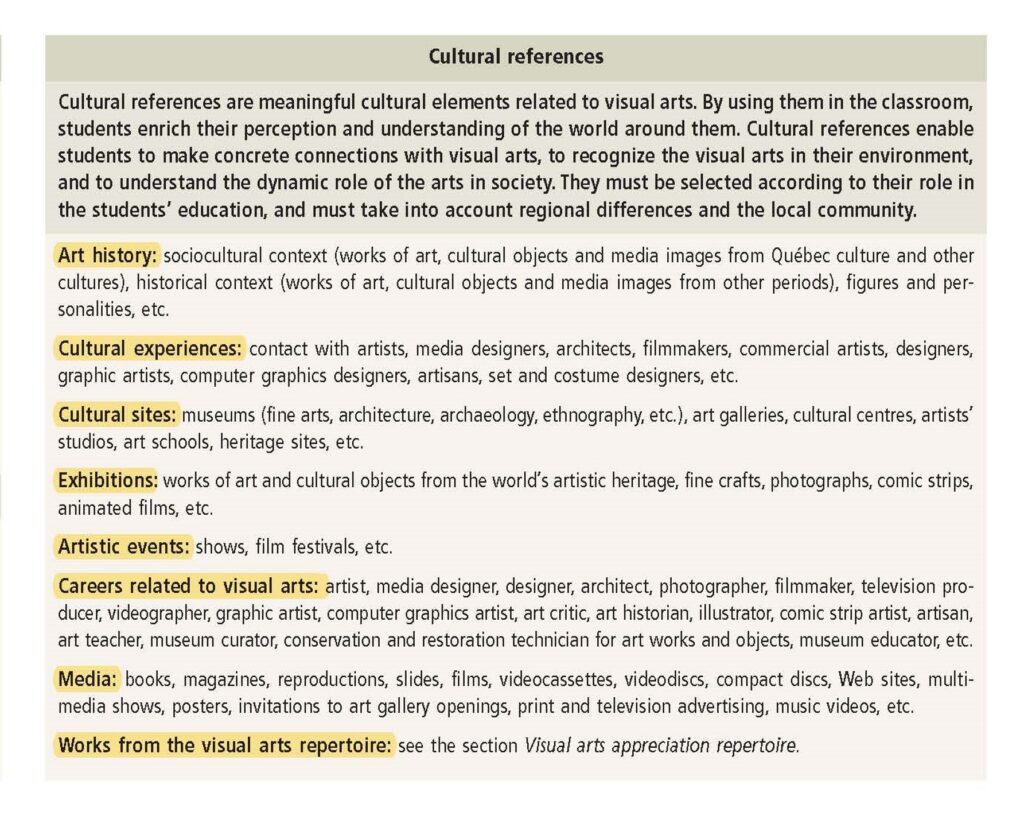
ᓵᑦᑕ 8, ᒪᑉᐱᒐᖅ 39
MEES ᐃᓕᓐᓂᐊᕈᑎᑦᓴᓕᐅᕐᑏᑦ ᐅᓐᓂᑑᑎᖃᕐᒥᔪᑦ ᐊᑐᕐᑐᓴᐅᓂᖏᓐᓂᒃ ᐃᓗᕐᖁᓯᕐᒨᓕᖓᔪᓂᒃ ᐃᑲᔪᕐᓯᔭᐅᖁᓪᓗᒋᑦ ᐃᓕᓐᓂᐊᑏᑦ ᓲᖑᓯᒋᐊᖁᓪᓗᒋᑦ ᖃᐅᔨᒪᓂᖏᓐᓄᑦ ᐊᒻᒪᓗ ᑐᑭᓯᒪᖁᓪᓗᒋᑦ ᐃᓅᓯᕐᒥᑕ ᐊᕙᑎᖏᓐᓂᒃ. ᑲᑎᕕᒃ ᐃᓕᓴᕐᓂᓕᕆᓂᒃᑯᓂ, ᐅᑉᐱᒋᔭᖃᕐᖁᒍᑦ ᐊᑐᕐᓂᖅ ᐃᓗᕐᖁᓯᐅᑉ ᐱᐅᒃᑯᑎᖏᓐᓂᒃ ᐱᒻᒪᕆᐅᓂᖓᓂᒃ ᐃᑲᔪᕐᓯᒐᓱᐊᕐᓂᑯᑦ ᐃᓕᓐᓂᐊᑏᑦ ᑐᑭᓯᓴᖁᓪᓗᒋᑦ ᐃᒻᒥᓂᒃ ᐃᓗᕐᖁᓯᒥᓂᓪᓗ. ᑕᒪᒃᑯᐊ ᐃᓗᕐᖁᓯᐅᑉ ᐱᐅᒃᑯᑎᖏᑦ ᐱᓯᒪᒍᓐᓇᒥᔪᑦ ᐊᑦᔨᒌᖕᖏᑐᓂᒃ ᐃᓗᕐᖁᓯᐅᔪᓂᒃ ᓯᓚᕐᔪᐊᓕᒫᒥ, ᑭᓯᐊᓂ ᐱᒻᒪᕆᐅᕗᖅ ᐳᐃᒍᕐᑌᓕᒪᓗᓂ ᐊᑐᕆᐊᖃᕐᓂᖏᑦ ᐃᓄᐃᑦ ᐃᓗᕐᖁᓯᖓᓂᒃ. ᑕᑯᒋᐊᕐᓗᒍ ᐊᑕᔪᖅ ᐃᓂᓪᓚᑎᕐᓯᒪᔪᒥ ᐃᑲᔪᕐᓯᔭᐅᖁᓪᓗᑎᑦ ᓇᓂᓯᒐᓱᐊᕐᓂᒥᒃ ᐅᕝᕙᓘᓐᓃᑦ ᓂᕈᐊᕋᓱᐊᕐᓂᒥᒃ ᖃᓄᖅ ᑕᒪᒃᑯᓂᖓ ᐃᓗᕐᖁᓯᕐᒨᓕᖓᔪᓂᒃ ᐊᑐᕈᓐᓇᓃᓐᓄᑦ.
2. ᖃᐅᔨᓴᕐᓂᖅ
ᑕᑯᒥᓇᕐᑐᓕᐅᕐᓂᖅ ᑕᑯᑦᓴᐅᒍᓐᓇᑐᓂ ᖃᐅᔨᓴᕐᓂᖅ ᐊᑑᑎᔭᐅᒋᐊᖃᓲᖅ ᑌᒪᖓᑲᓵᖅ. ᑐᕌᕐᓂᖃᕈᓐᓇᑐᑦ ᐃᓗᓕᒋᔭᐅᔪᓂᒃ ᐃᓕᑦᑕᕕᓂᕐᓂᒃ, ᐆᑦᑑᑎᒋᓗᒍ ᐊᓪᓚᓯᒪᔪᑎᒍᑦ ᖃᐅᔨᓴᕐᑕᐅᓂᖅ ᐃᓕᓐᓂᐊᑏᑦ ᑕᑯᑦᓴᐅᑎᑦᓯᒍᓐᓇᖁᓪᓗᒋᑦ ᖃᐅᔨᒪᔭᒥᓂᒃ ᐃᓕᑦᑕᕕᓂᕐᒥᑕ ᐃᓗᓕᖏᓐᓂᒃ ᖃᕆᐊᑉ ᐃᓗᐊᓂ. ᐊᑐᕐᑐᓴᓂᒃ ᖃᐅᔨᓴᕐᑕᐅᑎᑦᓯᓂᖃᕈᓐᓇᒥᔪᑦ ᐊᑕᐅᑦᓯᑰᕐᑐᒥᒃ ᐃᓕᓐᓂᐊᑏᑦ ᖃᐅᔨᒪᓂᒃᑯᑦ ᐃᓕᑦᑕᕕᓂᕐᒥᓂᒃ ᑐᖕᖓᕕᖃᕐᓗᑎᒃ ᑕᑯᒥᓇᕐᑐᓕᐊᕕᓂᕐᒥᓂᒃ. ᐱᔪᓐᓇᐅᑎᒋᔭᐅᔪᑦ ᐱᖓᓱᐃᑦ ᐊᑐᓂ ᖃᐅᔨᓴᕐᑕᐅᒋᐊᓖᑦ ᐊᒥᓱᕕᓪᓗᑎᒃ ᐃᓕᓐᓂᐊᓇᐅᑉ ᐊᕐᕌᒍᖓᓂ ᒪᓕᑦᓱᒋᑦ ᐃᓕᓐᓂᐊᑎᑦᓯᒍᑎᐅᔪᕕᓃᑦ ᐃᓕᓐᓂᐊᑎᑦᓯᔨᐅᔪᓄᑦ ᐅᕝᕙᓘᓐᓃᑦ ᓇᒻᒥᓂᖅ ᐱᓇᓱᐊᕐᑕᐅᑎᑕᐅᔪᓂ ᓂᕈᐊᕐᑕᕕᓂᕐᓂᒃ ᐃᓕᓐᓂᐊᑎᓄᑦ ᐊᑐᓂ:
- ᓄᐃᑦᓯᓂᖅ ᓇᒻᒥᓂᕐᒨᓕᖓᔪᓂᒃ ᐊᑦᔨᖑᐊᓂᒃ
- ᓄᐃᑦᓯᓂᖅ ᐱᕙᓪᓕᐊᔪᓕᕆᔩᑦ ᐊᑦᔨᖑᐊᖏᓐᓂᒃ
- ᐅᐱᒍᓱᓐᓂᖅ ᐱᓇᓱᐊᕐᑕᐅᔪᕕᓂᕐᓂᒃ ᑕᑯᒥᓇᕐᑐᓕᐅᕐᓂᒧᑦ ᐊᒻᒪᓗ ᐃᓗᕐᖁᓯᕐᒨᓕᖓᔪᓂ
ᐊᑐᕈᓐᓇᕆᕗᑎᑦ ᐃᓂᓪᓚᑎᕐᓯᒪᔪᒥᒃ ᑕᑕᕐᓴᓯᒪᔪᒥᒃ ᐅᓇᑎᑐᑦ. ᖃᐅᔨᓴᕐᓗᒋᑦ ᐃᓕᓐᓂᐊᑏᑦ ᐅᕝᕙᓘᓐᓃᑦ ᓇᒻᒥᓂᖅ ᐃᓂᓪᓚᑎᕐᓯᒪᔪᓕᐅᕈᓐᓇᖁᑎᑦ ᑐᖕᖓᕕᑦᑕᓕᓐᓂᒃ ᐅᕝᕙᓘᓐᓃᑦ ᓇᓗᓇᕐᓂᓴᓂᒃ ᐃᓗᓕᓕᓐᓂᒃ.
ᐃᑲᔪᕐᓯᔭᐅᖁᓪᓗᒋᑦ ᐃᓕᓐᓂᐊᑏᑦ ᑭᖕᖒᒪᒋᔭᖏᓐᓂᒃ ᐱᔪᓐᓇᐅᑎᓂᒃ ᑕᑯᒥᓇᕐᑐᓕᐅᕐᓂᒧᑦ ᑕᑯᑦᓴᐅᒍᓐᓇᑐᓂ, ᐃᑲᔪᕐᓯᔭᐅᒋᐊᖃᕐᖁᑎᑦ ᐊᓪᓚᖁᑎᓄᑦ ᑌᔭᐅᔪᒥ ᐃᓕᓐᓂᐊᓂᕐᒧᑦ ᐱᕙᓪᓕᐊᓂᖅ (Progression of Learning) ᐃᑲᔪᕐᓯᔭᐅᖁᓪᓗᑎᑦ ᐃᓗᓕᓕᒫᖏᓐᓂᒃ ᐊᒻᒪᓗ ᖃᐅᔨᒪᖁᓪᓗᑎᑦ ᐃᓕᓐᓂᐊᑎᑦᓯᒍᑎᑦᓴᓂᒃ. ᑕᒪᒃᑯᐊ ᐃᓗᓕᖏᑦ ᐃᓕᑦᑕᐅᖁᓪᓗᒋᑦ, ᐊᕕᑦᑐᓯᒪᑎᓪᓗᒋᑦ ᑲᑎᑦᑎᓯᒋᐊᖃᕐᖁᑎᑦ ᐊᕐᕌᒎᑉ ᐃᓗᐊᓅᓕᖓᔪᒥᒃ ᐸᕐᓀᒍᑎᑎᓐᓄᑦ.
ᒪᑯᐊ ᐊᑦᔨᒌᖕᖏᑐᐃᑦ ᐊᓪᓚᖁᑏᑦ ᐊᑐᕈᓐᓇᑕᑎᑦ ᐸᕐᓀᑎᓪᓗᑎᑦ ᑕᑯᒥᓇᕐᑐᓕᐅᕐᓂᒧᑦ ᐃᓕᓐᓂᐊᑎᑦᓯᓂᕐᓄᑦ:
ᐳᒃᑭᓂᕐᓴᖅ
- ᐃᓕᓐᓂᐊᓂᕐᒧᑦ ᐱᕙᓪᓕᐊᓂᖅ (Progression of Learning) (ᖃᓪᓗᓈᑎᑑᕐᑐᐃᑦ ᑭᓯᐊᓂ)
ᐳᕐᑐᓂᕐᓴᖅ
- ᐃᓕᓐᓂᐊᓂᕐᒧᑦ ᐱᕙᓪᓕᐊᓂᖅ (Progression of Learning) (ᖃᓪᓗᓈᑎᑑᕐᑐᐃᑦ ᑭᓯᐊᓂ)
3. ᐃᓕᓐᓂᐊᕈᑎᑦᓴᓕᐅᕐᓂᐅᑉ ᐅᓪᓗᖓ
ᐃᓕᓐᓂᐊᑎᑦᓯᓕᕈᕕᑦ ᑕᑯᒥᓇᕐᑐᓕᐅᕐᓂᒥᒃ ᐃᓕᓐᓂᐊᑎᓄᑦ, ᐊᑦᔨᒌᖕᖏᑐᓂᒃ ᐃᓕᓐᓂᐊᑎᑦᓯᒍᓯᖃᕈᓐᓇᖁᑎᑦ. ᑕᒪᒃᑯᐊ ᐊᑐᕐᑕᐅᒍᓐᓇᑐᐃᑦ ᖃᓄᑐᐃᓐᓇᖅ ᐳᒃᑭᓂᕐᓴᒦᑦᑐᓄᑦ ᐳᕐᑐᓂᕐᓴᒦᑦᑐᓄᓪᓗ. ᒪᑯᐊ ᐃᑭᑦᑐᐃᑦ ᐊᑦᔨᒌᖕᖏᑐᑦ ᐊᑐᕈᓐᓇᑕᑎᑦ ᖃᕆᐊᓐᓂ, ᐊᒻᒪᓗ ᐊᑐᕐᑕᐅᒍᓐᓇᓱᑎᒃ ᐃᓕᓐᓂᐊᑎᖁᑎᑎᓐᓄᑦ ᐊᒻᒪᓗ ᐳᕐᑐᓂᓕᓐᓅᓕᖓᒍᓐᓇᓱᑎᒃ ᖃᑦᓯᑐᐃᓐᓇᓄᑦ.
ᐊᑦᔨᒌᖕᖏᑐᓂᒃ ᐃᓕᓐᓂᐊᑎᑦᓯᒍᓯᖃᕐᓂᖅ
ᐳᒃᑭᓂᕐᓴᓄᑦ, ᐱᐅᓂᕐᓴᐅᓲᖅ ᑲᑎᑦᑎᓯᑦᓱᓂ ᐊᑦᔨᒌᖕᖏᑐᓂᒃ ᐱᑦᔪᑎᓕᓐᓂᒃ ᐊᑕᐅᓯᕈᕐᑎᓱᒍ ᐃᓕᓐᓂᐊᕋᑦᓴᖅ ᑌᒪᖕᖓᑲᓵᖅ, ᐃᓕᓐᓂᐊᑎᑦᓯᔨ ᑲᒪᒋᔭᖃᕆᐊᓕᒃ ᐃᓕᓐᓂᐊᑎᑦᓯᒐᓱᐊᕐᓗᓂ ᐃᓘᓐᓇᖏᓐᓂᒃ ᐱᑦᔪᑎᐅᔪᓂᒃ ᐊᑕᐅᓯᕐᒧᑦ ᐃᓕᓐᓂᐊᑎᑕᒥᓄᑦ. ᐊᑦᔨᒌᖕᖏᑐᓂᒃ ᐃᓕᓐᓂᐊᑎᑦᓯᒍᓯᖃᕐᓂᖅ ᑐᕌᒐᖃᕐᖁᖅ ᑲᑎᑦᑎᓯᓂᒃᑯᑦ ᐊᒥᓱᓂᒃ ᐱᑦᔪᑎᐅᔪᓂᒃ ᐃᓗᓪᓕᑐᕐᓱᒋᑦ ᐃᓕᓐᓂᐊᕋᑦᓴᓂᒃ ᐊᒻᒪᓗ ᐳᕐᑐᓯᒋᐊᕆᕈᑎᐅᑦᓱᓂ ᐃᓕᓐᓂᐊᑐᒥᒃ ᑕᒪᑦᓱᒧᖓᒨᓕᖓᔪᓂᒃ. ᐅᖃᐅᓯᓕᕆᓂᖅ ᐊᒥᓲᓕᖓᔪᓂᒃ ᐱᑦᔪᑎᖃᕐᓱᓂ ᐃᓕᓐᓂᐊᑎᑦᓯᒍᑎᐅᓲᖅ ᐅᖃᐅᓯᕐᒥᒃ ᐅᖄᕈᓐᓇᓯᖁᓪᓗᒍ. ᐃᓕᓐᓂᐊᑏᑦ ᐅᖃᐅᓯᕐᒥᒃ ᐊᑐᕆᐅᕐᓴᕆᐊᓖᑦ 15-ᕕᓪᓗᓂ 20-ᒧᑦ ᐊᐅᓚᔨᒍᓐᓇᓯᖁᓪᓗᒋᑦ. ᐅᖃᐅᓯᓕᕆᓂᖅ ᐊᑦᔨᒌᖕᖏᑐᑎᒍᑦ ᐱᐅᓂᕐᐸᐅᕗᖅ ᐃᓕᑦᑕᐅᓯᐊᖁᓪᓗᒍ. ᐊᕐᓱᕈᕐᓇᖏᑦᑐᖅ ᑲᑎᑦᑎᓯᑦᓱᓂ ᑕᑯᒥᓇᕐᑐᓕᐅᕐᓂᖅ ᑕᑯᑦᓴᐅᔪᑎᒍᑦ ᐅᐃᒍᐃᑎᑑᕐᑐᑎᒍᑦ ᐊᒻᒪᓗ ᐃᓅᖃᑎᒌᓄᐊᖓᔪᓂᒃ ᓱᑯᐃᔦᓂᒃᑯᑦ. ᐱᔪᓐᓇᓇᕐᒥᔪᖅ ᓱᑯᐃᔦᓂᒃᑯᑦ (ᐱᕈᕐᑐᐃᑦ, ᐃᓅᑉ ᑎᒥᖓ, ᐊᓂᕐᓂᖃᖕᖏᑐᒦᑦᑐᓕᕆᓂᖅ) ᐊᒻᒪᓗ ᓴᓇᑦᑐᓴᐅᑎᓂᖅ (ᐱᑐᑦᓯᒪᐅᑎᖃᑎᒌᑦᑐᓕᕆᓂᖅ, ᑐᑭᓯᓇᕐᑎᓯᓂᖅ, ᓴᓇᒻᒪᓕᕆᓂᖅ)! ᑕᑯᒥᓇᕐᑐᓕᐅᕐᓂᖅ ᐃᓕᑦᓯᓕᐅᒥᑎᑦᓯᒍᓐᓇᑐᖅ ᐅᖃᐅᓯᕐᒥᑦ ᐊᓪᓚᒍᓯᕐᒥᓗ ᐃᓕᓐᓂᐊᑎᓂᒃ. ᐱᔭᕐᓂᓂᕐᓴᐅᕗᖅ ᐃᓕᓐᓂᐊᑎᒧᑦ ᐊᓪᓚᓗᓂ ᐅᓂᒃᑲᐅᑎᓕᐅᕐᓗᓂ ᑕᑯᒥᓇᕐᑐᓕᐊᕕᓂᕐᒥᑕ ᒥᑦᓵᓅᓕᖓᔪᒥᒃ ᐱᓇᓱᐊᕐᑕᕕᓂᕐᒥᓂᒃ ᓱᓇᐅᖕᖏᑐᒥ ᐱᖕᖏᑎᓪᓗᒍ ᐊᓪᓚᐅᑎᒥᒃ ᐱᑦᓱᓂ ᐊᓪᓚᕕᑦᓴᒨᒐᓱᐊᕐᓱᒍ. ᐅᖄᓂᒃᑯᑦ, ᐃᓕᓐᓂᐊᑎᓂᒃ ᑕᑯᓐᓇᖑᐊᕐᑎᓯᒍᓐᓇᖁᑎᑦ ᐊᑦᔨᖑᐊᒥᒃ ᐅᖄᕈᑎᒋᕈᓐᓇᑕᖏᓐᓂᒃ ᓴᓇᒻᒪᑎᒍᑦ, ᑕᐅᑦᑐᑎᒍᑦ ᐊᒻᒪᓗ ᐅᖃᐅᓯᕐᑎᒍᑦ ᐃᓕᑦᓯᒪᓕᕐᑕᖏᓐᓄᑦ.
ᐅᓇ ᐱᓇᓱᐊᕐᑕᐅᔪᕕᓂᖅ ᐳᕐᑐᓂᓕᓐᓄᑦ 3-ᒥ ᑰᑦᔪᐊᒥ 2022-ᖑᑎᓪᓗᒍ: ᐃᓕᓐᓂᐊᑎᑦᓯᔨ ᑐᖕᖓᕕᖃᕐᑎᓯᔪᕕᓂᖅ ᐃᓕᑦᑕᐅᓚᖓᑎᓪᓗᒍ ᐱᕈᕐᑐᔦᑦ ᒥᑦᓵᓄᑦ. ᐅᐃᒍᐃᑎᑐᑦ, ᐃᓕᓐᓂᐊᑏᑦ ᐃᓕᑦᓯᓕᐅᒥᔪᕕᓃᑦ ᐅᖃᐅᓯᕐᓂᒃ ᐱᕈᕐᑐᓅᓕᖓᔪᓂᒃ. ᓱᑯᐃᔦᓂᕐᒥᒃ, ᐃᓕᓐᓂᐊᑏᑦ ᐃᓚᐅᔪᕕᓃᑦ ᐆᑦᑐᕋᕐᓱᑎᒃ, ᓀᒪᑦᓱᑎᒃ ᐊᒻᒪᓗ ᐊᑦᑐᐊᓱᑎᒃ ᐃᓕᓐᓂᐊᑐᕕᓃᑦ ᐊᑦᔨᒌᖕᖏᑐᓂᒃ ᐱᕈᕐᑐᔭᓂᒃ ᓯᓚᕐᔪᐊᓕᒫᒥ ᐱᓯᒪᔪᓂᒃ. ᐅᖄᕈᑎᓕᕕᓃᑦ ᐃᑉᐱᓂᐊᕐᓂᒥᓂᒃ ᑎᐸᖏᓐᓂᓗ; ᐃᓚᐅᖃᑦᑕᓱᑎᒃ ᐅᐃᒍᐃᑎᑐᑦ ᐅᖄᑦᓱᑎᒃ ᑐᑭᓯᓇᕐᑎᓯᓂᒃᑯᑦ. ᐃᓕᓐᓂᐊᑏᑦ ᐱᕈᕐᑐᔭᓂᒃ ᐱᕈᕐᓰᔪᕕᓃᑦ ᐊᑐᕐᓱᑎᒃ ᐱᕈᕐᑐᑐᕐᑕᕕᓂᕐᒥᑕ ᓴᐅᓂᖏᓐᓂᒃ. ᐅᖄᕈᑎᖃᕐᓱᑎᒃ ᑭᖕᖒᒪᑦᓯᓂᕐᒥᓄᑦ ᐱᕈᕐᑐᓂᒃ ᐊᒻᒪᓗ ᑕᑯᓐᓇᓂᒃᑯᑦ ᖃᐅᔨᓴᖃᑦᑕᑐᕕᓃᑦ ᐱᓇᓱᐊᕈᓯᕐᒥᒃ ᐊᑕᐅᓯᕕᑦᓱᑎᒃ ᖃᓄᐃᓕᖓᓕᕋᓗᐊᕐᒪᖔᑕ ᐱᕈᕐᑐᓕᐊᖏᑦ. ᐅᖄᕈᑎᖃᕐᓂᒥᔪᑦ ᐃᓗᓯᕐᓱᓯᐊᕐᓇᑑᓂᖏᓐᓄᑦ ᐊᑐᐃᓐᓇᕈᕐᑎᓱᑎᒃ ᐱᕈᕐᑐᔭᓂᒃ ᓂᕿᓂᒃ ᐊᒻᒪᓗ ᐱᕈᕐᑐᔭᓂᒃ ᐃᒥᕋᑦᓴᒥᓂᒃ. ᐃᓄᒻᒪᕆᑦ ᐁᓯᒪᔪᕕᓂᐅᒻᒥᔪᖅ ᖃᕆᐊᒧᑦ ᓱᕙᓪᓕᕆᐊᕐᑐᓱᓂ. ᑲᑎᑦᑎᓯᓯᒪᔪᒍᑦ ᐃᓄᐃᑦ ᐃᓗᕐᖁᓯᖓᓂᒃ ᑖᑦᓱᒧᖓ ᒪᒪᕐᑐᓕᐊᕕᓂᕐᒧᑦ. ᑕᑯᒥᓇᕐᑐᓕᐅᕐᓂᒥ, ᐃᓕᓐᓂᐊᑏᑦ ᑕᑯᑦᓴᐅᑎᑦᓯᔪᕕᓃᑦ ᐱᕈᕐᑐᓅᓕᖓᔪᓂᒃ. ᑕᑯᓐᓇᖃᑦᑕᓱᑎᒃ ᒥᖑᐊᕐᑕᕕᓂᕐᓂᒃ ᑕᑯᒥᓇᕐᑐᓕᐅᕐᑎᒧᑦ Arcimboldo-ᒧᑦ ᐃᓱᒪᑦᓴᓯᐅᖁᓪᓗᒋᑦ. ᐱᓇᓱᐊᕐᑕᖏᑦ ᐱᔭᕇᕐᒪᑕ, ᐊᓪᓚᓯᔪᕕᓃᑦ ᓀᑦᑐᓂᒃ ᑐᑭᒨᕐᑐᓂᒃ ᑐᑭᓯᓇᕐᑎᓯᒍᑎᐅᑦᓱᑎᒃ ᐱᓇᓱᐊᕐᑕᒥᓂᒃ. ᒪᓕᒋᐊᖃᕐᓱᑎᒃ ᑐᑭᒨᕐᑐᓴᐅᑉ ᐋᕐᕿᓯᒪᒍᓯᖓᓂᒃ ᐊᒻᒪᓗ ᐅᖃᐅᓯᕐᓂᒃ ᐊᑐᕐᑕᐅᔪᑦᓴᓂᒃ ᐅᖃᐅᓯᕐᑕᖃᕐᓱᑎᒃ ᐊᓪᓚᒍᑎᕆᓂᐊᕐᓱᒋᑦ ᑐᑭᒨᕐᑐᖏᑦ. ᑕᒪᓐᓇ ᐱᓇᓱᐊᕐᑕᐅᒍᓐᓇᑐᖅ ᐊᓯᖏᓐᓄᑦ ᐳᕐᑐᓂᓕᓐᓄᑦ, ᐋᕐᕿᒋᐊᕋᓚᑐᐃᓐᓇᓗᒋᑦ.
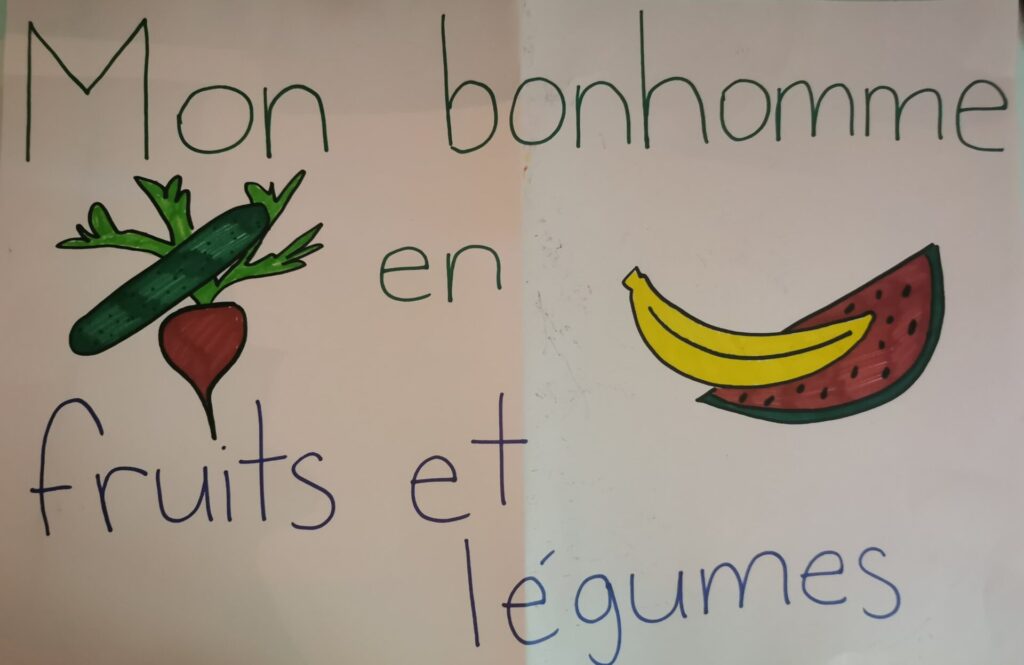
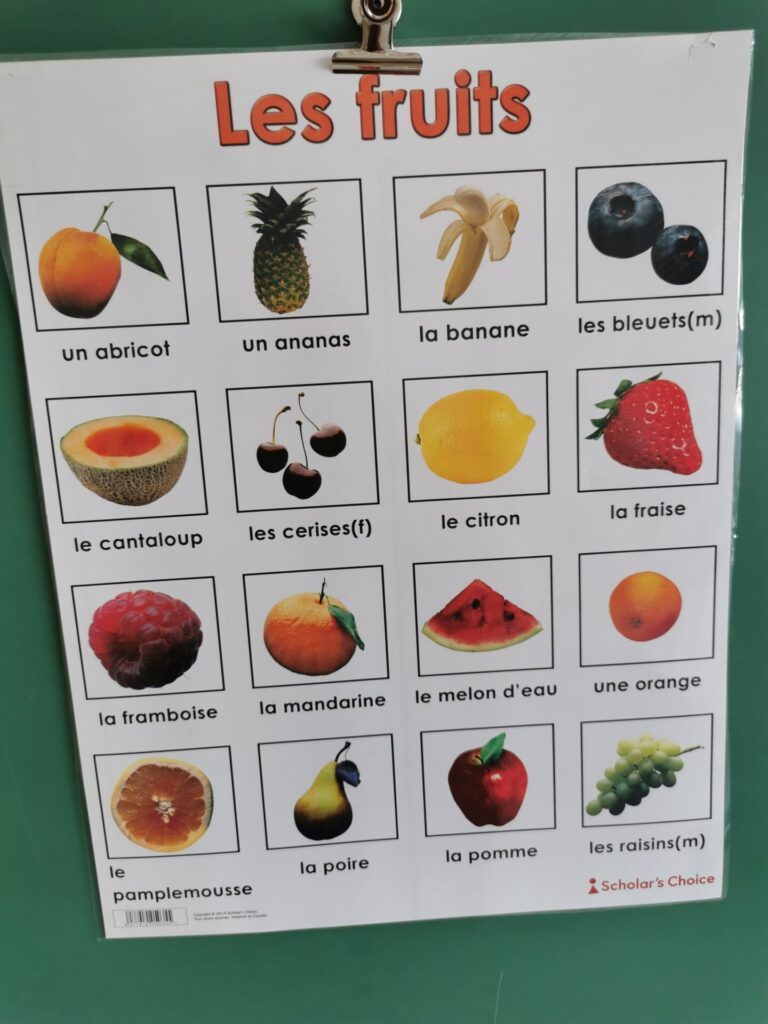
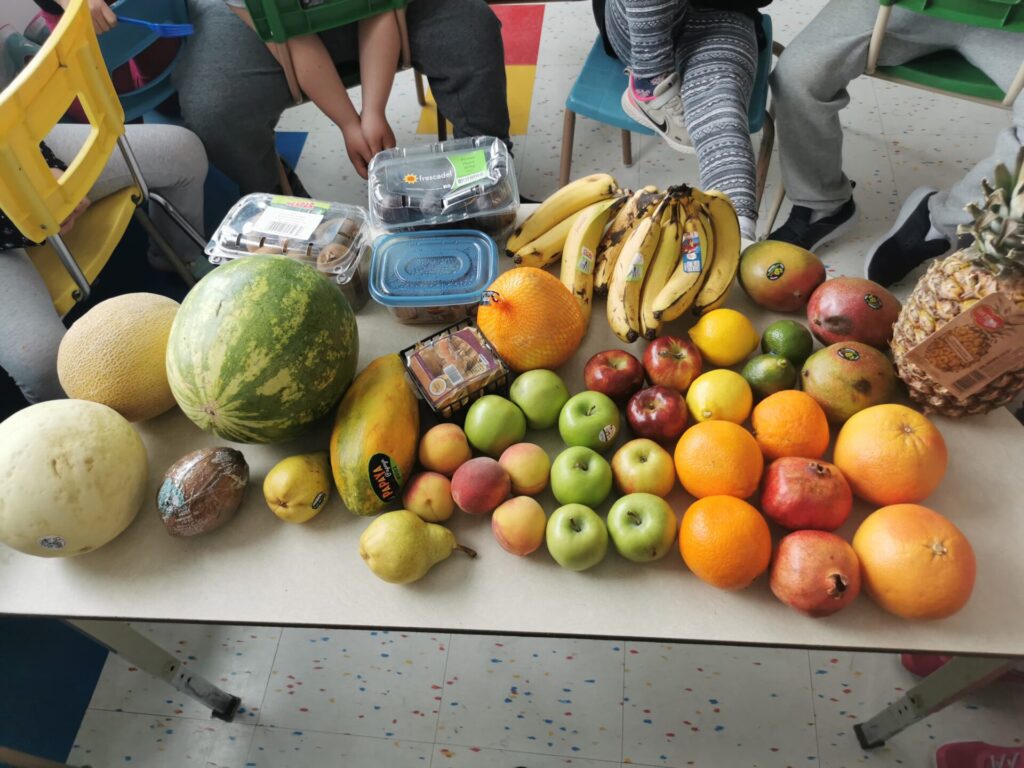
ᓱᑯᐃᔦᓂᖅ
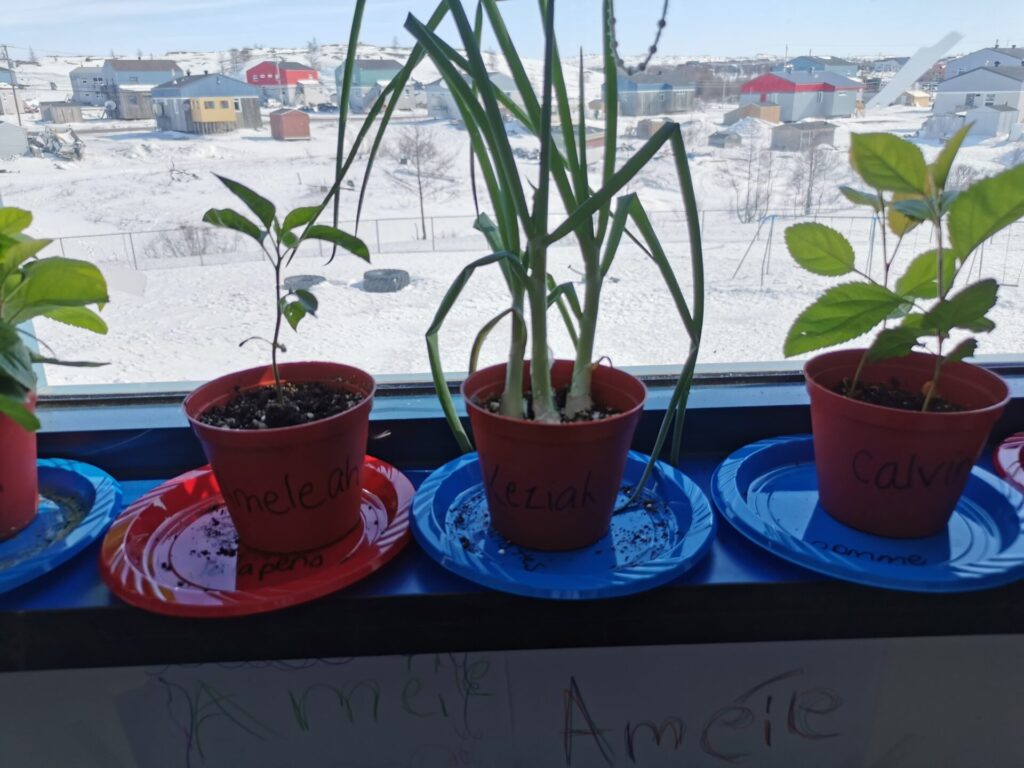
ᓱᑯᐃᔦᓂᖅ
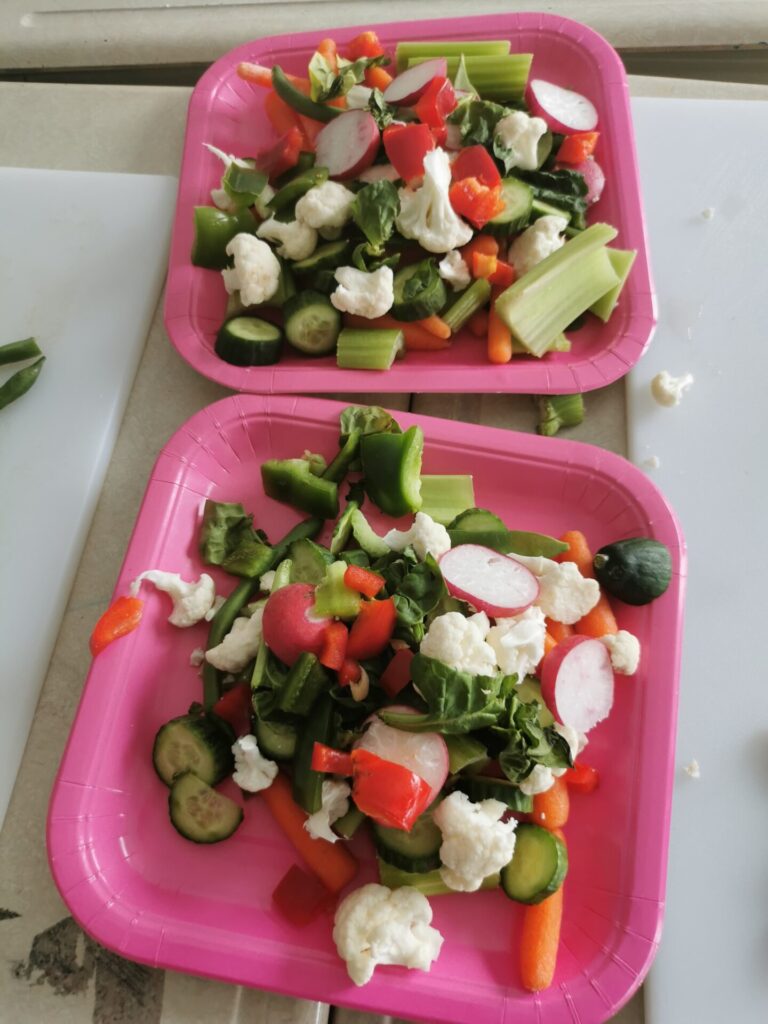
ᓱᑯᐃᔦᓂᖅ
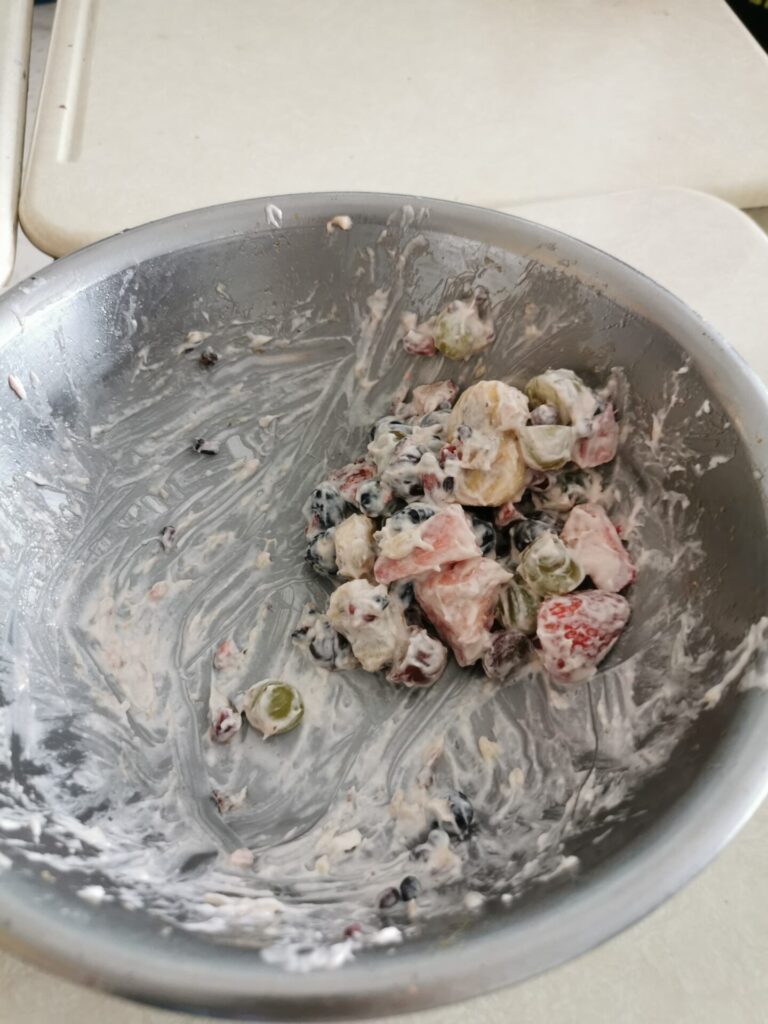
ᐃᓗᕐᖁᓯᓕᕆᓂᖅ

ᑕᑯᒥᓇᕐᑐᓕᐅᕐᓂᒧᑦ ᑕᑯᓐᓇᕋᑦᓴᓕᐊᕕᓂᖅ
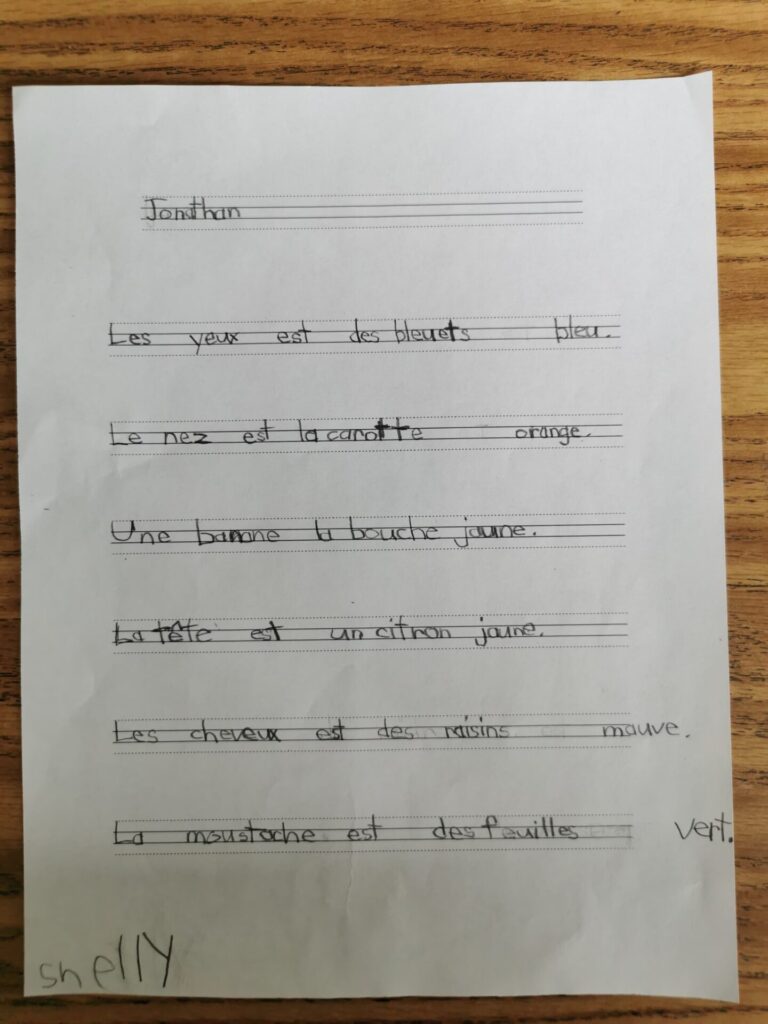
ᐅᖃᐅᓯᓕᕆᓂᖅ
ᐃᓄᒻᒪᕆᓐᓅᓕᖓᔪᖅ ᐊᑐᕋᑦᓴᖅ
ᐃᓄᒻᒪᕇᑦ ᐊᑐᕐᑐᓚᕆᐊᓗᐃᑦ ᐃᓄᐃᑦ ᐃᓗᕐᖁᓯᖏᓐᓄᑦ ᖃᐅᔨᒪᔨᒋᔭᐅᑦᓱᑎᒃ. ᐃᓚᐅᑎᑦᓯᓂᖅ ᖃᐅᔨᒪᔨᐅᓂᖏᑦ ᐊᑦᔨᒌᖕᖏᑐᓂᒃ ᐃᓕᓐᓂᐊᕃᑦ ᑐᖕᖓᕕᖏᑎᒍᑦ ᐱᐅᔪᓪᓚᕆᐅᕗᖅ ᐅᖃᐅᓯᐅᑉ ᐁᑉᐱᐅᑎᖓᓂᒃ ᐃᓕᓐᓂᐊᕈᑎᐅᓗᓂ. ᐱᒍᓐᓇᓇᕐᖁᖅ ᖃᐅᔨᒪᔭᐅᔪᖅ ᐊᑐᕐᓗᒍ ᐊᒻᒪᓗ ᐃᓄᒻᒪᕆᒃ ᐃᓚᐅᑎᓪᓗᒍ ᓄᓇᕕᒻᒥᐅᑦ ᐃᓱᒪᑦᓴᓯᐅᕈᑎᐅᓗᓂ ᐅᕝᕙᓘᓐᓃᑦ ᐊᑐᐃᓐᓇᕈᕐᑎᒍᑎᐅᓗᓂ ᐊᑐᕐᓂᕆᔭᐅᓚᖓᔪᓄᑦ ᑕᑯᒥᓇᕐᑐᓕᐅᕐᓂᑯᑦ. ᐅᓂᒃᑲᐅᓯᖏᑦ ᐊᒻᒪᓗ ᐃᓅᓯᕐᒥᒃ ᐊᑑᑎᓯᒪᔭᖏᑦ ᐃᓕᓐᓂᐊᑎᓂᒃ ᓄᐃᑦᓯᑎᑦᓯᒍᑎᐅᒍᓐᓇᑐᖅ ᐊᑦᔨᒌᖕᖏᑐᓂᒃ ᑕᑯᒥᓇᕐᑐᓕᐅᕐᓂᑯᑦ ᐊᒻᒪᓗ ᐃᓚᐅᑎᑦᓯᓯᐊᕐᓗᑎᒃ ᑕᒪᒃᑯᓂᖓ ᑕᑯᒥᓇᕐᑐᓕᐊᒥᓄᑦ. ᐃᓄᒻᒪᕇᑦ ᑎᒍᒥᐊᓪᓚᕆᑦᑐᑦ ᐊᑐᕐᑐᓚᕆᒻᒥᒃ ᖃᐅᔨᒪᓂᕐᒥᒃ ᖃᕆᐊᑉ ᐃᓗᐊᓂ ᐅᓂᒃᑲᐅᓯᒋᕈᓐᓇᓱᒋᑦ ᐊᑦᔨᒌᖕᖏᑐᑎᒍᑦ ᐱᓂᐊᕐᓂᖃᕐᓗᑎᒃ ᐊᒻᒪᓗ ᐱᔭᕐᓃᑑᒍᓐᓇᓱᑎᒃ ᐃᓕᑦᓯᑎᑦᓯᒍᓰᑦ, ᐆᑦᑑᑎᒋᓗᒋᑦ ᑲᒻᒥᐅᓂᖅ ᐅᕝᕙᓘᓐᓃᑦ ᓴᐸᖓᓕᕆᓂᖅ, ᐅᕝᕙᓘᓐᓃᑦ ᒥᖕᖑᐊᕆᐅᕐᓴᓂᒃᑯᑦ. ᐃᓄᒻᒪᕆᓐᓂᒃ ᐃᓚᐅᑎᑦᓯᓗᓂ ᐱᐅᔪᒻᒪᕆᐅᒐᔭᕐᑐᖅ ᐃᓕᓐᓂᐊᑎᓄᑦ. ᐅᑯᐊ ᑕᑯᒋᐊᕐᓯᒋ ᐊᐱᕐᓲᔭᕈᑎᕕᓃᑦ ᓄᓇᕕᒻᒥᐅᓄᑦ ᐃᓄᒻᒪᕆᓐᓄᑦ. ᐅᑯᐊ ᑕᑯᒋᐊᕐᓯᒋ ᐊᐱᕐᓲᔭᕈᑎᕕᓃᑦ ᓄᓇᕕᒻᒥᐅᓄᑦ ᐃᓄᒻᒪᕆᓐᓄᑦ.
ᐊᐱᕐᓲᔭᕐᓂᖅ
ᐊᐱᕐᓲᔭᕐᓂᖅ ᐊᑐᕐᑕᐅᒍᓐᓇᒥᔪᖅ ᑕᑯᒥᓇᕐᑐᓕᐅᕐᓂᒧᑦ ᑕᑯᑦᓴᐅᒍᓐᓇᑐᓂ, ᐱᓗᐊᕐᑐᒥᒃ ᐃᓱᒪᑦᓴᓯᐅᒍᑎᑦᓴᐅᑎᓪᓗᒍ ᐅᕝᕙᓘᓐᓃᑦ ᓇᑯᕐᒦᕈᑎᐅᑎᓪᓗᒍ ᑕᑯᒥᓇᕐᑐᓕᐅᕕᓂᕐᒧᑦ. ᐱᒋᐅᕐᓴᑎᑦᓯᓂᖅ ᐅᖄᖃᑎᒌᓐᓂᑯᑦ ᐃᓕᓐᓂᐊᑎᓂᒃ ᓲᖑᓰᒋᐊᕈᓐᓇᑐᖅ ᐅᖃᐅᓯᖏᓐᓂᒃ ᑕᑯᒥᓇᕐᑐᓕᐅᕐᓂᐅᑉ ᒥᑦᓵᓄᑦ, ᑭᓯᐊᓂᓗ ᐊᓯᖏᓐᓄᑦ ᐃᓕᓐᓂᐊᕕᒻᒥ ᐃᓕᓐᓂᐊᑕᐅᓲᓄᑦ. ᑖᓐᓇ ᐊᑐᕐᑕᐅᓂᕐᐸᐅᓲᖅ ᐊᒥᓲᓕᖓᔪᓂᒃ ᐃᓕᓐᓂᐊᑎᖁᑎᓕᓐᓄᑦ ᐃᓕᓐᓂᐊᑎᑦᓯᔨ ᐊᐱᕆᖃᑦᑕᓱᓂ ᐃᓕᓐᓂᐊᑎᓂᒃ ᐊᐱᕐᓲᑎᖃᕐᓱᓂ ᑕᑯᒥᓇᕐᑐᓕᐊᕕᓂᐅᑉ ᒥᑦᓵᓄᑦ ᐅᖄᑎᒐᓱᐊᕐᓱᒋᑦ ᐳᕐᑐᓂᕐᓴᒥᒃ ᑐᑭᓕᓐᓂᒃ ᐊᒻᒪᓗ ᑐᑭᓯᓴᕐᓱᒋᑦ. ᐊᑐᕐᑕᐅᒍᓐᓇᒥᔪᖅ ᐃᓕᓐᓂᐊᕆᐊᖕᖓᑐᓄᑦ, ᐊᐱᕐᓲᑏᓪᓗ ᑭᐅᑦᔪᑏᓪᓗ ᑐᑭᖃᑦᓯᐊᖏᒃᑲᓗᐊᕐᐸᑕ. ᐊᐱᕐᓲᔭᕐᓂᖅ ᐊᓯᑦᔨᒍᓐᓇᑐᖅ ᐊᒻᒪᓗ ᐃᓕᓐᓂᐊᑏᑦ ᐃᓕᓐᓂᐊᓂᕐᒥᓂᒃ ᐱᔪᓐᓇᓯᕙᓪᓕᐊᕋᔭᕐᑐᑦ:
- ᐊᖏᖃᑎᖃᕐᓂᖅ/ᐊᖏᖃᑎᖃᖕᖏᓂᖅ ᐊᐱᕐᓲᑎᓂᒃ
- ᑭᐅᕈᓯᖏᑦ ᐊᐱᕐᓲᑎᓂᒃ
- ᐊᐱᕐᓲᑏᑦ ᐃᓕᓐᓂᐊᑎᓂᒃ ᐃᒻᒥᓂᕐᓱᓗᑎᒃ ᑭᐅᒐᓱᐊᕐᑎᓗᒋᑦ, ᐃᑲᔪᕐᑕᐅᓗᑎᒃ ᐃᓕᓐᓂᐊᑎᑦᓯᔨᒧᑦ
- ᐊᐱᕐᓲᑏᑦ ᐃᓕᓐᓂᐊᑏᑦ ᐃᓕᑕᕆᒋᐅᕐᓴᕆᐊᓕᖏᑦ, ᑌᒍᓐᓇᕆᐊᓕᖏᑦ, ᑐᑭᓯᓇᕐᑎᓯᒍᓐᓇᕆᐊᓕᖏᑦ ᐊᒻᒪᓗ ᑐᑭᓯᓂᖏᑦᑕ ᐱᐅᓯᖏᑦ
- ᐊᐱᕐᓲᑏᑦ ᐃᓕᓐᓂᐊᑎᓄᑦ ᓂᕈᐊᕐᑕᐅᕈᓐᓇᑐᑦ ᐊᒻᒪᓗ ᐃᓂᓪᓚᑎᕐᓗᒋᑦ ᑐᑭᖏᓐᓂᒃ ᐃᒻᒥᓂᕿᓗᑎᒃ
4. KI ᐊᕐᕌᒍᑕᒫᑦ ᑕᑯᒥᓇᕐᑐᓕᐅᕐᓂᒧᑦ ᐊᕐᕕᑕᕐᑎᑕᐅᓂᖏᑦ
2018 ᐱᒋᐊᕐᓱᒍ, ᑲᑎᕕᒃ ᐃᓕᓴᕐᓂᓕᕆᓂᒃᑯᑦ ᐃᑭᑦᑐᓂᒃ ᐳᕐᑐᓂᕐᓴᒦᑦᑐᓂᒃ 4-5-ᒥ (ᐃᓗᓕᖓ 2) ᐃᓕᓐᓂᐊᑎᓂᒃ ᐃᓚᐅᑎᑦᓯᓲᑦ ᑕᑯᒥᓇᕐᑐᓕᐅᕐᓂᒧᑦ ᐊᕐᕕᑕᕐᓂᑯᑦ. ᑖᓐᓇ ᐃᓚᐅᔪᓂᒃ ᒪᑯᓂᖓ ᐊᑑᑎᑎᑦᓯᓲᖅ:
- ᐃᒻᒥᓂᒃ ᑕᑯᓐᓇᖑᐊᕐᓱᑎᒃ ᑕᑯᒥᓇᕐᑐᓕᐅᕐᑎᐅᓂᕐᒥᒃ ᑕᑯᑦᓴᐅᒍᓐᓇᑐᓂᒃ
- ᐅᖄᖃᑎᖃᕐᓂᖅ ᑕᑯᓯᓇᕐᑐᓕᐅᕐᑎᓂᒃ ᐊᒻᒪᓗ ᑕᑯᒥᓇᕐᑐᓕᐅᕐᑏᑦ ᐃᓕᓐᓂᐊᑎᑦᓯᔨᖏᓐᓂᒃ
- ᐅᖄᕈᑎᖃᕐᑎᓯᓲᖅ ᑕᑯᒥᓇᕐᑐᓕᐅᕐᓂᒥᒃ ᐊᑐᕐᓱᑎᒃ ᐅᖃᐅᓯᕐᓂᒃ ᐅᖃᐅᓯᓕᐊᕕᓂᕐᓂᒃ ᑕᑯᒥᓇᕐᑐᓕᐅᕐᑎᓄᑦ ᐊᒻᒪᓗ ᑕᑯᒥᓇᕐᑐᓕᐅᕐᑏᑦ ᐱᒋᐅᕐᓭᔨᖏᓐᓄᑦ
- ᑕᑯᒥᓇᕐᑐᓕᐅᓲᑦ ᑐᖕᖓᕕᖃᕐᓱᑎᒃ ᓂᕈᐊᕐᑕᐅᔪᕕᓂᕐᒥᒃ ᐊᕐᕌᒍᒥ
- ᐃᓕᑦᓯᒋᐊᓪᓛᑎᑦᓯᓲᖅ ᑕᑯᒥᓇᕐᑐᓕᐅᕐᓂᐅᑉ ᒥᑦᓵᓄᑦ ᓄᓇᖃᕐᖄᓯᒪᔪᐃᑦ ᑕᑯᒥᓇᕐᑐᓕᐅᕐᑎᖏᓐᓄᑦ

ᐅᐸᑦᑕᐅᓲᑦ ᐊᓯᑦᔨᓲᖅ ᐊᕐᕌᒍᑕᒫᑦ ᐊᒻᒪᓗ ᓂᕈᐊᕐᑕᐅᓱᑎᒃ ᐃᓄᓐᓄᑦ ᓄᓇᖃᕐᖄᓯᒪᔪᓄᓪᓗ ᑕᑯᒥᓇᕐᑐᓕᐅᕐᓂᒧᑦ ᑕᑯᑦᓴᐅᕕᖏᓐᓂ ᐊᒻᒪᓗ ᕿᒥᕐᕈᔭᐅᕕᖏᓐᓂ. ᐊᕐᕌᒎᓯᒪᔪᓂ ᑕᑯᒥᓇᕐᑐᓕᐅᕐᓂᒧᑦ ᐅᐸᑦᑕᐅᔪᕕᓃᑦ ᒪᑯᐊ:
- ᑭᖕᙰᑦ ᐃᓕᑦᓯᒋᐊᕐᑐᓱᑎᒃ ᐊᓪᓚᖑᐊᕐᓯᒪᔪᓕᐅᕐᓱᑎᒃ ᓄᓇᕗᒻᒥ
- ᑐᕌᓐᑐ ᐳᓛᕆᐊᕐᓱᑎᒃ ᑕᑯᔭᒐᖃᕐᕕᓄᑦ ᐃᓄᓐᓄᑦ ᑕᑯᒥᓇᕐᑐᓕᐊᕕᓂᕐᓄᑦ ᑕᑯᑦᓴᐅᑎᑦᓯᑎᓪᓗᒋᑦ ᐊᒻᒪᓗ ᐃᓚᐅᒋᐊᕐᑐᓱᑎᒃ ᖃᕆᑕᐅᔭᑎᒍᑦ ᐊᓪᓚᖑᐊᕆᐅᕐᓴᑎᑕᐅᑦᓱᑎᒃ
- ᑰᑦᔪᐊᒧᑦ ᐃᓕᑦᓯᒋᐊᕐᑐᓱᑎᒃ ᐃᓄᐃᑦ ᑕᑯᒥᓇᕐᑐᓕᐊᕕᓂᖏᓐᓂᒃ ᒍᐃᓂᐯᒃ ᑕᑯᒥᓇᕐᑐᓕᐊᕕᓃᑦ ᑕᑯᑦᓴᐅᕕᖓᓄᑦ, ᕚᓐᑰᕗ ᑕᑯᒥᓇᕐᑐᓕᐊᕕᓃᑦ ᑕᑯᑦᓴᐅᕕᖓ, ᐊᒻᒪᓗ ᐱᒋᐅᕐᓴᑎᑕᐅᓂᖃᕐᓱᑎᒃ ᑕᑯᒥᓇᕐᑐᓕᐅᕐᑎᒧᑦ ᓂᐊᑉᒧᑦ. ᐃᓕᓐᓂᐊᑏᑦ ᐃᓚᐅᔪᕕᓃᑦ ᐊᓪᓚᖑᐊᕆᐊᕐᓴᓂᕐᒧᑦ ᐊᒻᒪᓗ ᐊᑦᔨᖑᐊᓕᕆᓂᕐᒥᒃ ᐱᒋᐅᕐᓴᑎᑕᐅᓂᒃᑯᑦ.
ᐊᕐᕕᑕᕐᓂᖅ ᑕᒡᒐᓂ ᐃᓕᓐᓂᐊᓇᐅᑉ ᐊᕐᕌᒍᖓᓂ
ᑐᖕᖓᕕᒃ ᐅᓐᓂᑑᑎᐅᓛᕐᑐᖅ ᐊᒻᒪᓗ ᐃᓕᓐᓂᐊᑏᑦ ᐱᕕᑦᓴᖃᕐᑎᑕᐅᓛᕐᑐᑦ ᓴᓇᖕᖑᐊᑕᕕᓂᕐᒥᓂᒃ ᐊᐅᓪᓚᑎᑦᓯᑎᑕᐅᓗᑎᒃ ᑐᖕᖓᕕᒋᔭᐅᔪᖅ ᒪᓕᓪᓗᒍ. ᑌᒪ, ᐃᓕᓐᓂᐊᕈᑎᓕᕆᕕᒃᑯᓂ ᐱᓯᒪᔪᑦ ᕿᒥᕐᕈᓛᕐᑐᑦ ᑕᑯᒥᓇᕐᑐᓕᐅᕕᓂᕐᓂᒃ ᐊᐅᓪᓚᑎᑕᐅᔪᕕᓂᕐᓂᒃ ᐊᒻᒪᓗ ᓂᕈᐊᓛᕐᓱᑎᒃ ᐃᓕᓐᓂᐊᑎᓂᒃ ᐃᓚᐅᓛᕐᑐᓂᒃ. ᕿᒥᕐᕈᔪᕕᓃᑦ ᐃᓂᓪᓚᑎᕐᓯᒪᔪᒥᒃ ᐊᑐᓛᕐᑐᑦ ᖃᐅᔨᓴᕐᓗᑎᒃ ᑕᑯᒥᓇᕐᑐᓕᐅᕈᓯᐅᔪᕕᓂᕐᓂᒃ ᐊᒻᒪᓗ ᐱᕙᓪᓕᐊᕈᑎᐅᔪᕕᓂᕐᓂᒃ (ᐃᖕᖏᕈᓯᐅᑉ ᐅᖃᐅᓯᕐᑕᕆᒍᓐᓇᑕᖏᑦ ᐅᕝᕙᓘᓐᓃᑦ ᑲᑕᑦᔭᓂᖅ). ᑖᓐᓇ ᐃᓂᓪᓚᑎᕐᓯᒪᔪᖅ ᐊᐅᓪᓚᑎᑕᐅᓛᕐᑐᖅ ᑐᖕᖓᕕᖃᕐᓗᓂ. ᐊᕐᕕᑕᕐᓂᖅ ᒣᖑᑎᓪᓗᒍ ᐊᑑᑎᔭᐅᕙᓪᓗᓲᖅ, ᐃᓕᓐᓂᐊᑏᑦ ᖃᐅᔨᓴᕐᑕᐅᓚᐅᕐᑎᓇᒋᑦ ᐅᕝᕙᓘᓐᓃᑦ ᖃᐅᔨᓴᕐᑕᐅᕇᕐᓯᒪᓕᕐᑎᓗᒋᑦ.
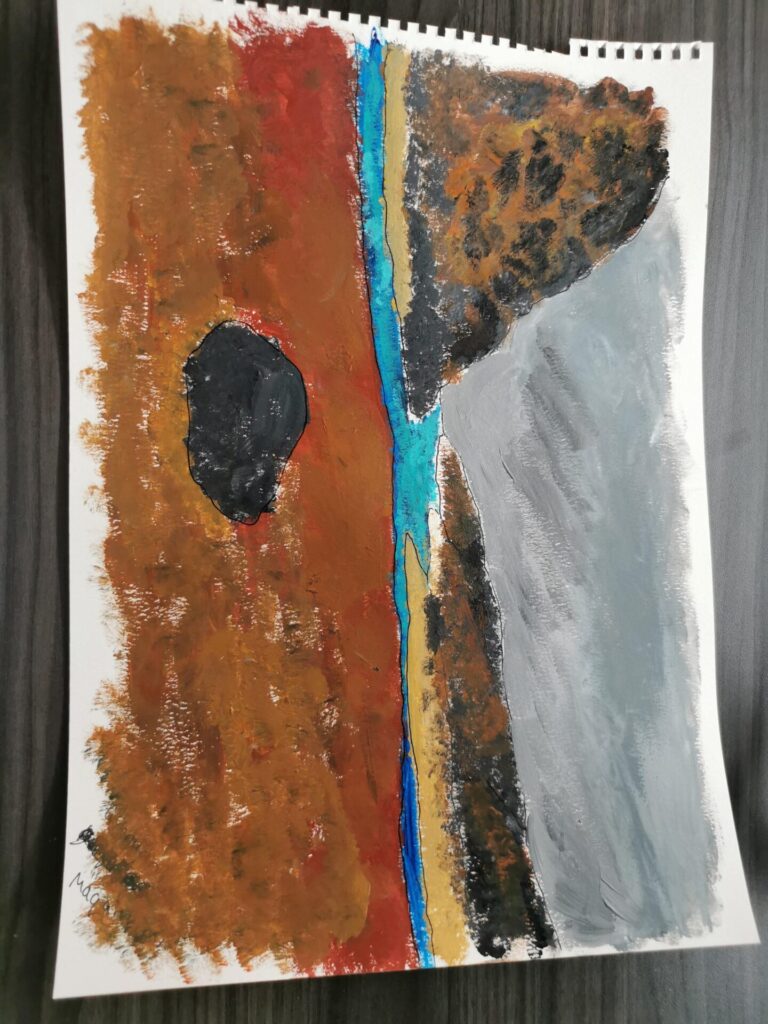

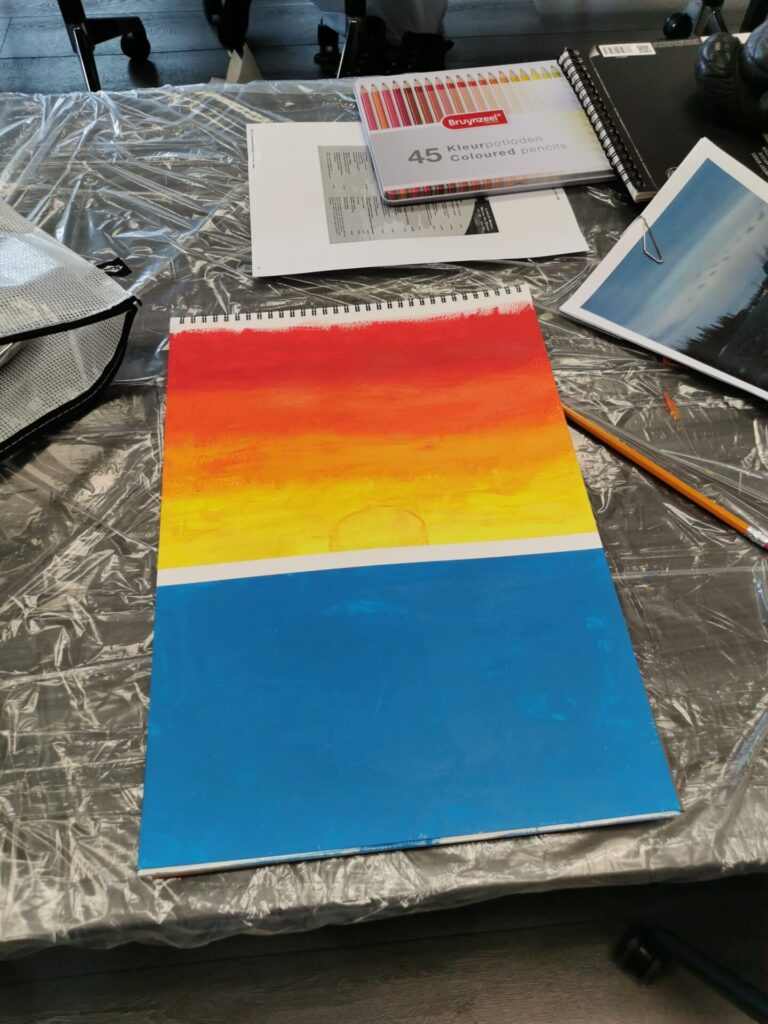

ᑕᑯᓐᓇᓗᒍ ᑕᑯᓐᓇᕋᑦᓴᓕᐊᕕᓂᖅ ᑐᑭᓯᒋᐊᑦᓯᐊᕈᒪᒍᕕᑦ ᐊᒻᒪᓗ ᐃᑲᔪᕐᓯᔭᐅᒍᒪᒍᕕᑦ ᑕᒡᒍᖓ ᐊᕐᕌᒍᒧᑦ!
ᐃᓄᑦᑎᑐᑦ ᐊᓪᓚᓯᒪᔪᐃᑦ ᑕᑯᑦᓴᐅᒍᓐᓇᑐᑦ. ᓄᐃᑦᓯᒍᒪᒍᕕᑦ ᐊᓪᓚᓯᒪᔪᓂᒃ, ᐊᔭᓪᓗᒍ: ⚙️ > Subtitles > Inuktitut.
5. ᐃᓕᓐᓂᐊᕈᑎᑦᓭᑦ
ᐊᒥᓱᐃᑦ ᐃᓕᓐᓂᐊᕈᑎᑦᓭᑦ ᐊᑐᐃᓐᓇᕗᑦ ᖃᕆᐊᑉ ᐃᓗᐊᓂ ᐊᒻᒪᓗ ᖃᕆᑕᐅᔭᑎᒍᑦ ᐃᑲᔪᕐᓯᒍᑎᐅᑦᓱᑎᒃ ᐃᓕᓐᓂᐊᑎᑦᓯᒍᓯᐅᔪᓂ ᐳᒃᑭᓂᕐᓴᓄᑦ ᐊᒻᒪᓗ ᐳᕐᑐᓂᕐᓴᓄᑦ. ᐱᓇᓱᑦᑎᕗᑦ ᑌᒪᖕᖓᑦ ᓄᑕᐅᓯᓕᕐᑐᐃᓱᑦ ᖃᕆᑕᐅᔭᒦᑦᑐᒥᒃ ᓄᓇᕕᒃ-IcE ᐊᑐᐃᓐᓇᖃᕐᑎᓯᖁᑦᓱᒍ ᐃᓄᓐᓅᓕᖓᔪᓂᒃ ᐃᓕᓐᓂᐊᑎᑦᓯᕈᑎᑦᓴᓂᒃ.
ᓄᓇᕕᒃ-IcE-ᒥ, ᓇᓂᓯᒍᓐᓇᖁᑎᑦ ᐃᓕᓐᓂᐊᑎᑦᓯᒍᑏᑦ ᐃᓂᖓᓂ, ᑕᑯᒥᓇᕐᑐᓕᐊᕕᓃᑦ ᓄᓇᕕᒻᒥ: ᑌᑦᓱᒪᓂ, ᒫᓐᓇᐅᔪᖅ ᐊᒻᒪᓗ ᓯᕗᓂᕐᒥᒃ ᐃᓕᓐᓂᐊᑎᑦᓯᒍᑎᓂᒃ, ᑐᓴᕐᑎᓯᒍᑎᕐᑕᖃᕐᓱᓂ ᑕᑯᒥᓇᕐᑐᓕᐅᕐᑏᑦ ᑭᓇᐅᓂᖏᓐᓂᒃ ᐊᒻᒪᓗ ᐊᓪᓚᓯᒪᔪᓂᒃ ᑐᑭᓯᓇᕐᑎᓯᔪᓂᒃ ᖃᓄᐃᓘᓲᖑᓂᖏᓐᓄᑦ:
ᑕᑯᓐᓇᕋᑦᓴᓕᐊᕕᓃᑦ ᓂᕈᐊᕐᑕᐅᔪᕕᓃᑦ ᑕᑯᒥᓇᕐᑐᓕᐊᕕᓃᑦ ᓄᓇᕕᒻᒥ: ᑌᑦᓱᒪᓂ, ᒫᓐᓇ ᐊᒻᒪᓗ ᓯᕗᓂᕐᒥ
ᕿᓚᐅᑦᔭᓂᐅᑉ ᒥᑦᓵᓄᑦ ᓄᓇᕕᒻᒥ
ᓴᓇᖕᖑᐊᕈᑎᓕᐅᕈᓐᓇᒪᖔᑦ ᓄᓇᕕᒻᒥ
ᒪᑯᐊ ᐃᑲᔪᕐᓯᒋᐊᕈᑏᑦ ᐱᑐᑦᓯᒪᐅᑎᖏᑦ ᐃᑲᔪᕐᓯᒍᓐᓇᑐᑦ ᐃᓕᓐᓂᐊᑎᑦᓯᒋᐅᕐᓴᕈᑎᕆᒐᔭᕐᑕᐱᑦ ᐸᕐᓀᓂᒃᑯᑦ ᐃᕝᕙᓘᓐᓃᑦ ᑫᓪᓗᑐᖁᓪᓗᒋᑦ ᐃᓕᓐᓂᐊᑏᑦ:
ᐊᑐᕐᑐᒪᕇᑦ ᐱᑐᑦᓯᒪᐅᑎᖏᑦ
- ᐊᕙᑕᖅ ᑲᑎᕐᓱᓯᒪᔭᖏᑦ: ᓄᓇᕕᒻᒥ ᐃᓄᐃᑦ ᑕᑯᒥᓇᕐᑐᓕᐊᕕᓂᖏᑦ ᕿᒥᕐᕈᐊᖅ
- ᓄᓇᕕᒃ ᑕᑯᒥᓇᕐᑐᓕᐅᕐᓂᖅ ᐆᒪᕗᖅ: ᕿᒥᕐᕈᐊᖅ ᑕᑯᒥᓇᕐᑐᓕᐅᕐᑏᑦ ᐊᒻᒪᓗ ᑭᓇᒃᑰᓂᖏᑦ (ᖃᓪᓗᓈᑎᑑᕐᑐᐃᑦ ᑭᓯᐊᓂ)
- ᓱᖃᑦᓯᐅᑏᑦ ᑐᖕᖓᕕᓖᑦ ᓱᕕᓀ ᐊᓲᓇᐅᑉ ᑕᑯᒥᓇᕐᑐᓕᐊᕕᓂᖏᑦᑕ ᑕᑯᑦᓴᐅᑎᑦᓯᕕᖏᑦ ᓯᓚᕐᔪᐊᒥ ᓇᓃᓐᓂᖏᑦ
- ᐃᓂᖓᑦ ᐃᓚᒌᑦ ᑕᑯᑦᓴᐅᑎᑦᓯᕕᖓ: ᑕᑯᒥᓇᕐᑐᓕᐊᕕᓃᑦ ᐊᒻᒪᓗ ᐊᑦᔨᖑᐊᑦ ᑭᖕᖓᓂ ᐊᒻᒪᓗ ᕿᑭᕐᑖᓗᒻᒥ
- ᐃᓄᐃᑦ ᑕᑯᒥᓇᕐᑐᓕᐊᕕᓂᖏᑦ ᐊᕐᕌᒍᒥ ᓯᑕᒪᕕᑦᑕᑐᖅ: ᐃᓄᐃᑦ ᑕᑯᒥᓇᕐᑐᓕᐊᕕᓂᖏᑦ ᕿᒥᕐᕈᐊᖅ (ᖃᓪᓗᓈᑎᑑᕐᑐᐃᑦ ᑭᓯᐊᓂ)
ᐅᑯᐊ ᐊᑐᕐᑐᒪᕇᑦ ᐱᑐᑦᓯᒪᐅᑎᖏᑦ ᐃᑲᔪᕐᓯᒍᓐᓇᑐᑦ ᑮᓇᐅᔭᖃᕐᑎᓯᓂᒃᑯᑦ ᑕᑯᒥᓇᕐᑐᓕᐅᕐᓂᒧᑦ ᐱᓇᓱᐊᕋᓱᐊᕐᑎᓗᑎᑦ. ᑐᑭᓯᒋᐊᑦᓯᐊᕈᒪᒍᕕᑦ ᑕᒪᒃᑯᐊ ᑮᓇᐅᔭᖃᕐᑎᓯᒍᑏᑦ ᒥᑦᓵᓄᑦ ᐅᕝᕙᓘᓐᓃᑦ ᑐᑦᓯᕋᐅᑎᑖᕈᒪᓪᓗᑎᑦ ᑕᑕᕐᓴᕋᑦᓴᒥᒃ, ᐅᖄᕕᕆᒍᓐᓇᑌᑦ ᐃᓕᓐᓂᐊᕕᒻᒥ ᐃᓕᓐᓂᐊᑎᑦᓯᔩᑦ ᐊᖓᔪᕐᖄᖓᓄᑦ ᐅᕝᕙᓘᓐᓃᑦ ᐃᓕᓐᓂᐊᕈᑎᑦᓴᓕᐅᕐᓂᒧᑦ ᐃᓱᐊᕐᓭᔨᒧᑦ:
ᓇᓂᓯᒐᓱᐊᕐᓂᖅ ᑮᓇᐅᔭᖃᕐᑎᓯᒐᔭᕐᑐᓂᒃ
- ᐃᓗᓯᕐᓱᓯᐊᕐᑐᐃᑦ ᐃᓕᓐᓂᐊᕖᑦ (Healthy Schools) (ᖃᓪᓗᓈᑎᑑᕐᑐᐃᑦ ᑭᓯᐊᓂ)
- ᓯᕗᓂᑦᓯᐊᖃᕐᓂᖅ & ᐃᓗᓯᕐᓱᓯᐊᕐᑐᓂᒃ ᓄᓇᓕᓕᐅᕐᓂᐅᑉ ᑐᕌᒐᖏᑦ (Brighter Futures & Building Healthy Communities Initiatives) (ᖃᓪᓗᓈᑎᑑᕐᑐᐃᑦ ᑭᓯᐊᓂ)
- ᐃᓗᕐᖁᓰᑦ ᐃᓕᓐᓂᐊᕕᓐᓂ (La Culture à l’école) (ᖃᓪᓗᓈᑎᑑᕐᑐᐃᑦ ᑭᓯᐊᓂ)
- ELAN (ᖃᓪᓗᓈᑎᑑᕐᑐᐃᑦ ᑭᓯᐊᓂ)
6. ᑐᓴᐅᒪᖃᑎᒌᓐᓂᖅ
Thᐃᓕᓐᓂᐊᕈᑎᑦᓴᓕᐅᕐᓂᒧᑦ ᐃᓱᐊᕐᓭᔨᐅᑉ ᐃᓂᖓᑦ ᑕᑯᒥᓇᕐᑐᓕᐅᕐᓂᖅ ᑕᑯᑦᓴᒍᓐᓇᑐᓂ ᑲᑎᕕᒃ ᐃᓕᓴᕐᓂᓕᕆᓂᒃᑯᓂ ᒫᓐᓇ ᐃᓐᓄᕋᑕᖕᖏᑐᖅ. ᐊᐱᕐᓲᑎᑦᓴᖃᕈᕕᑦ ᑐᖕᖓᕕᓕᓐᓂᒃ ᑕᑯᒥᓇᕐᑐᓕᐅᕐᓂᖅ ᑕᑯᑦᓴᐅᒍᓐᓇᑐᓂᒃ, ᐅᖄᕕᒋᒍᓐᓇᑌᑦ ᔮᔅᒥᓐ ᑦᓴᕌᕌ, ᑐᑭᒧᐊᕐᑎᓯᔨᐅᑉ ᐃᑕᔪᕐᑎᖓ ᐃᓕᓐᓂᐊᕈᑎᓕᕆᕕᒻᒥ, ᐅᕙᓂ yasmine.charara@kativik.qc.ca
